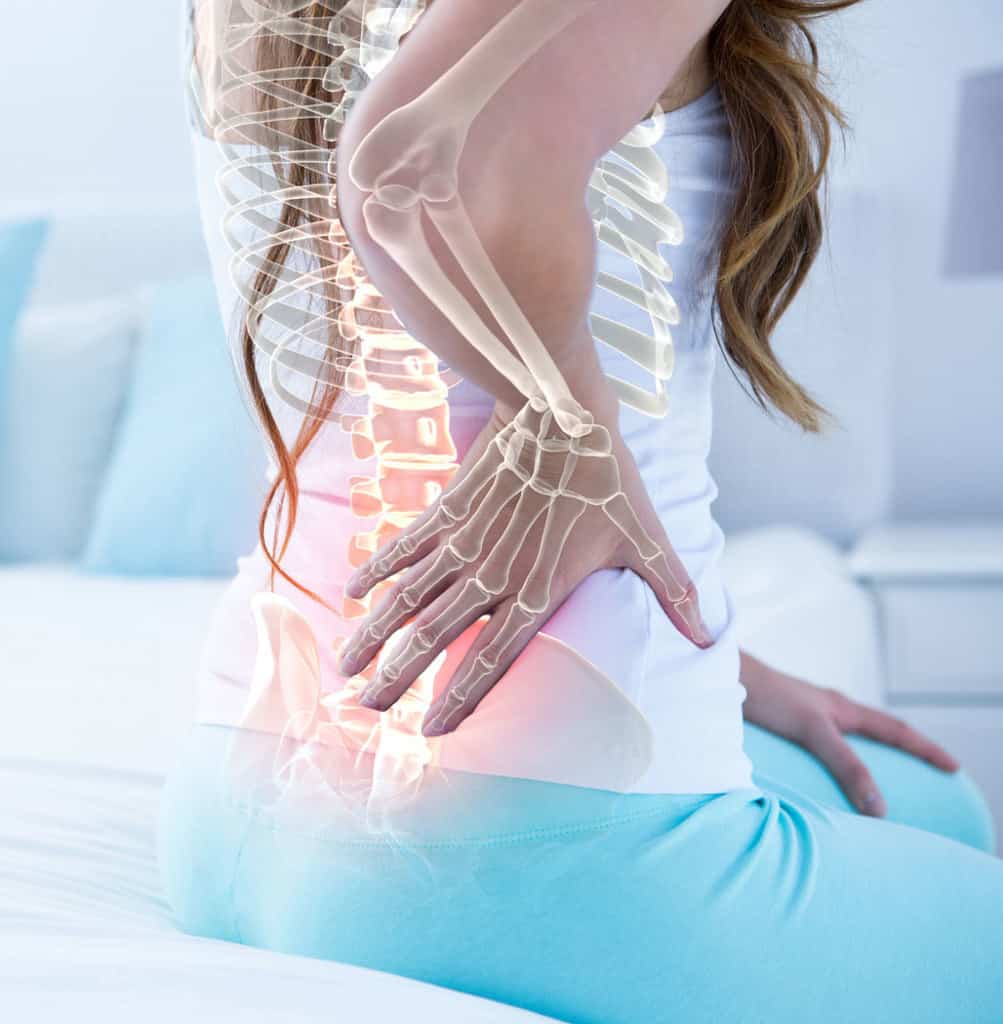As a young woman, you may think osteoporosis is an “old people problem” for Future You, but there are numerous things you can do right now to decrease your risk of developing osteoporosis. Although you may feel invincible now, did you know that adults’ bone mass can start to dwindle at as early as 30 years old?
How Bones Work
Our bones are growing, living, dynamic tissue. In fact, our body constantly replaces old bone with new throughout our lives. When we were kids, new bone got replaced faster than old bone, allowing our skeletons to grow. When we get past that 30 years old mark, bone starts to dwindle faster than it’s replaced.
What is osteoporosis and are you at risk?
Osteoporosis is a condition where bones get weaker, more brittle, and more prone to injury. While anyone can get osteoporosis, some demographics are more at risk than others, such as:
- Individuals with small frames
- People of Asian and European descent
- Women who started menstruating early or have irregular or missing periods
- Those who have a generally less-than-healthy lifestyle: being inactive, eating unhealthily, drinking alcohol
Women are more at risk than men, but men shouldn’t neglect their bone health either.
How can I prevent osteoporosis?
If you’re a young woman reading this, the good news is there is plenty you can do right now to prevent osteoporosis. The following things are a few simple guidelines.
1. Get your calcium, vitamin A, and vitamin D.
Calcium, vitamin A, and vitamin D are three of the most important nutrients for your bones, so make sure you get plenty of these through your food. Most people do not need supplements; if you are wondering whether supplements are helpful to you, talk to your doctor first. Be aware that there is such a thing as too much vitamin A, so consume that one in moderation!
- Calcium can be found in leafy green vegetables, dairy products, and soybeans. If you are lactose-intolerant (a common trait among people of Asian descent), you can try eating smaller servings of dairy throughout the day, taking lactase pills, or eating more leafy greens, tofu, and soybean products.
- Vitamin D is produced by your body when you go outside, so simply go outdoors! Being outdoors and breathing fresh air is good for your physical and mental health too. Vitamin D can also be found in foods such as eggs, fish, and fortified milk.
- Vitamin A is important to your bones, immune system, and eye health. However, consuming too much vitamin A can harm your bones. The Institute of Medicine recommends a daily retinol vitamin A intake of less than 10,000 IU. Three ounces of liver or beef has about 30,000 IU of retinol vitamin A, while an egg has about 280.
2. Do weight-bearing exercises like hiking and lifting.
These exercises can make your bones stronger. This is because when you put force on your bones, your body responds by building more cells. Interestingly, dominant hands often have more bone mass than non-dominant hands for this reason.
Some women are hesitant to lift weights because they’re afraid of getting bulky. This is a myth. Hormones (natural and injected), what you eat, and how much you eat also factor into how “big” you get. In actuality, weight-lifting tones your muscle and burns fat – two things that can make you appear thinner.
However, a word about fitness: do not overexert yourself. Women who “overtrain” are more at risk for osteoporosis. Some extreme athletes have brittle bones and are more easily injured. Your athletic performance may be great now, but weak bones might put you on the sidelines earlier than you’d like.
How do you know if you’re overtraining? If your period stops, that’s a bad sign. Missing your period is indicative of low estrogen levels, and low estrogen levels can lead to osteoporosis.
3. Moderate your drinking and quit smoking.
Decreasing your alcohol consumption and quitting smoking will bring numerous health benefits not limited to your bones. Alcohol interferes with calcium and vitamin D levels in your body, and we’ve already learned how important those substances are to our bone health. Alcohol can even lead to irregular menstrual cycles, and if you have brittle bones already, falling down while drunk can be more than embarrassing – it can be dangerous.
How is osteoporosis treated?
If you’re concerned about you or a loved one’s bone health, rest assured that there are options for treatment.
Your physician may prescribe a medication that will help slow down the bone loss, such as Actonel. If affording medication is a challenge for you, you can buy prescription drugs from international and Canadian pharmacies. Rx Connected is a Canada pharmacy referral service that is trusted by many Americans, and it only sources drugs from qualified pharmacies and fulfilment centers that have met strict standards set by their relevant governing bodies.
Medication aside, there are numerous lifestyle changes to fight osteoporosis, such as eating the right nutrients and exercising more. The only caveat here is to be careful – be careful not to engage in dangerous exercises if your bones are fragile.
Take Care of Your Bones
Take care of your bones and your future self will thank you! It’s not that difficult – if you’re already eating well and moving, you’re on the right track. If you want to learn more about bone health, visit the National Institute of Arthritis and Musculoskeletal and Skin Diseases, where research for this article was found. More information about weight-lifting myths can be found here.

